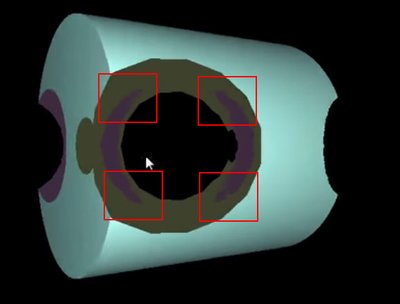Anonymous Coward wrote:I finally had time to take a closer look at this thread. I am very disappointed that the "enhanced" version of the Compaq card is slower in DOS than the original!
How do you mean? Q-vision was the enhanced card. It beat everything... and I mean everything, hands down with Doom benchmarking.
Shadow Lord wrote:Excellent thread here. EISA video cards have been rarities, outside of the Compaq QVision ones that show up all the time. I find the results for the Mach32 a bit surprising. The Mach32 was an excellent DOS card, and I am very happy with my 2MB MCA version. Of course I have an Elsa 4MB and a 4MB? Miro Crystal 32 so not too worried 😉. Thanks again for the excellent info.
Thanks, it took quite a while to accumulate results, glad it's appreciated.
You have an MCA version of Mach 32!? If so, do you have any pictures? It would be interesting to see. Also, if you could post pictures of you EISA cards, maybe over on this thread: -
EISA Graphics / Video Cards
This too would also be appreciated, thanks!
dogchainx wrote:What EISA cards compared to their ISA counterpart for gaming?
I'm playing around with my EISA Gateway 486 system and enjoying the fiddling with SCSI EISA, but there's no way I'm going to procure an EISA Mach32 anytime soon, so I'm left with ET4000AX ISA, Stealth PRO ISA, Stealth64 ISA.
I might have to do my own benchmarks. 🤣
I have not yet done much testing between both ISA and EISA... this is something in the pipeline. From memory, cards that have the same chipset but are available in both ISA and EISA bus are: -
ATI Mach 32
S3's 805, 911, 924, 928
Artists GPX
and, I remember seeing an EISA Cirrus Logic a while back, can't remember which chipset revision.
EISA ATI Mach 32's are extremely rare... If I see another one, I would probably still jump on it for a spare. I've only ever seen one for sale... the one I bought!
brassicGamer wrote:I have just acquired an EISA / VLB combo board. Although it came with an EISA SCSI controller, I have no other EISA cards. I've got about 3 VLB cards and a selection of ISA ones too so, as soon I can hunt down some EISA equivalents, I'll be able to contribute to this cool project 😀
Thanks for the comments, It would be great if you (...and others) were to contribute at some point in any way you can and would be much appreciated.
Look forward to any benchmark data you may have.
